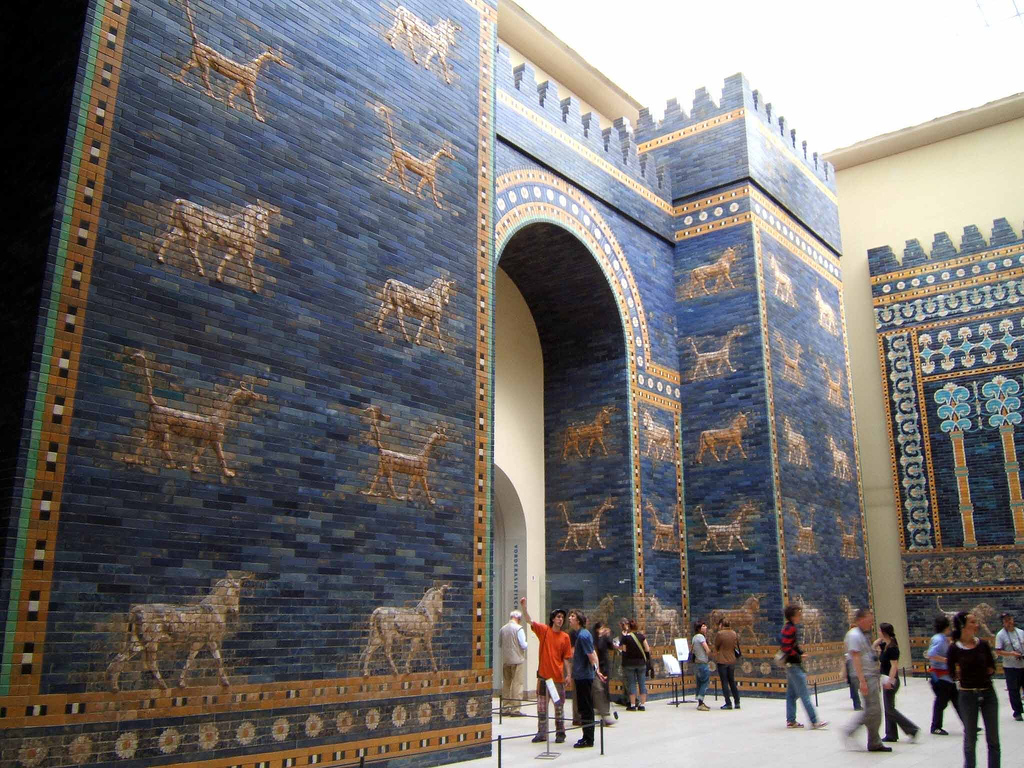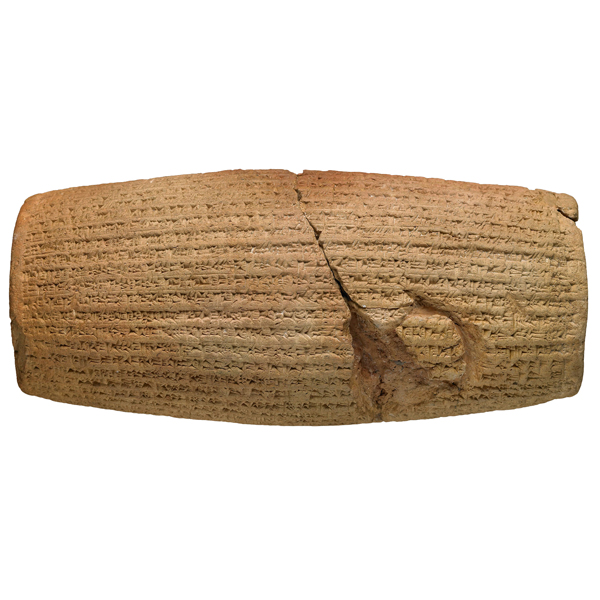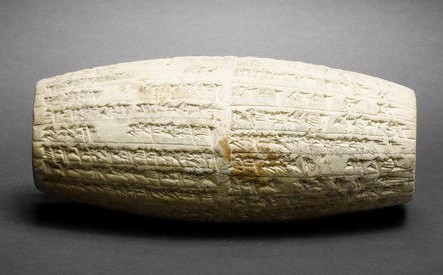Look at this rare piece of history that was auctioned off at Doyle New York on 9th of April and sold for a world record $605,000! The large Babylonian cylinder is not only an important example of cuneiform, but it is also from the reign Nebuchadnezzar II, King of Babylon from 604 – 562 BC, who was one of the most famous ancient rulers. It was he who was responsible for the destruction of Solomon’s Temple in Jerusalem, and the Babylonian exile of the Jews, and the construction of the Hanging Gardens of Babylon, one of the Seven Wonders of the Ancient World. Sound familiar? He also built the monumental Ishtar Gate, which is now reconstructed in Berlin’s Pergamon Museum.
This particular example describes the rebuilding of the temple of Shamash in Sippar (modern Tell Abu Habbah in Iraq) and dates to the Neo-Babylonian period, circa 604-562 BC. With 20.8 cm in length, it is the largest example to have come to the market in recent years. Bonhams in London sold a smaller piece from Nebuchadnezzar period, 13.3 cm in length, in April 2011 for £220,000.
It was customary for the kings of Babylon to publicly cement their relationship with the gods by restoring their temples. These accomplishments were recorded in cuneiform writing on clay cylinders that were then buried in the foundations of restored temples. The most famous of these clay cylinders is the Cyrus Cylinder named for the Persian King Cyrus the Great who conquered Babylon in 540 BC, and released the Jews from captivity. The Cyrus Cylinder is now in the collection of the British Museum in London.






